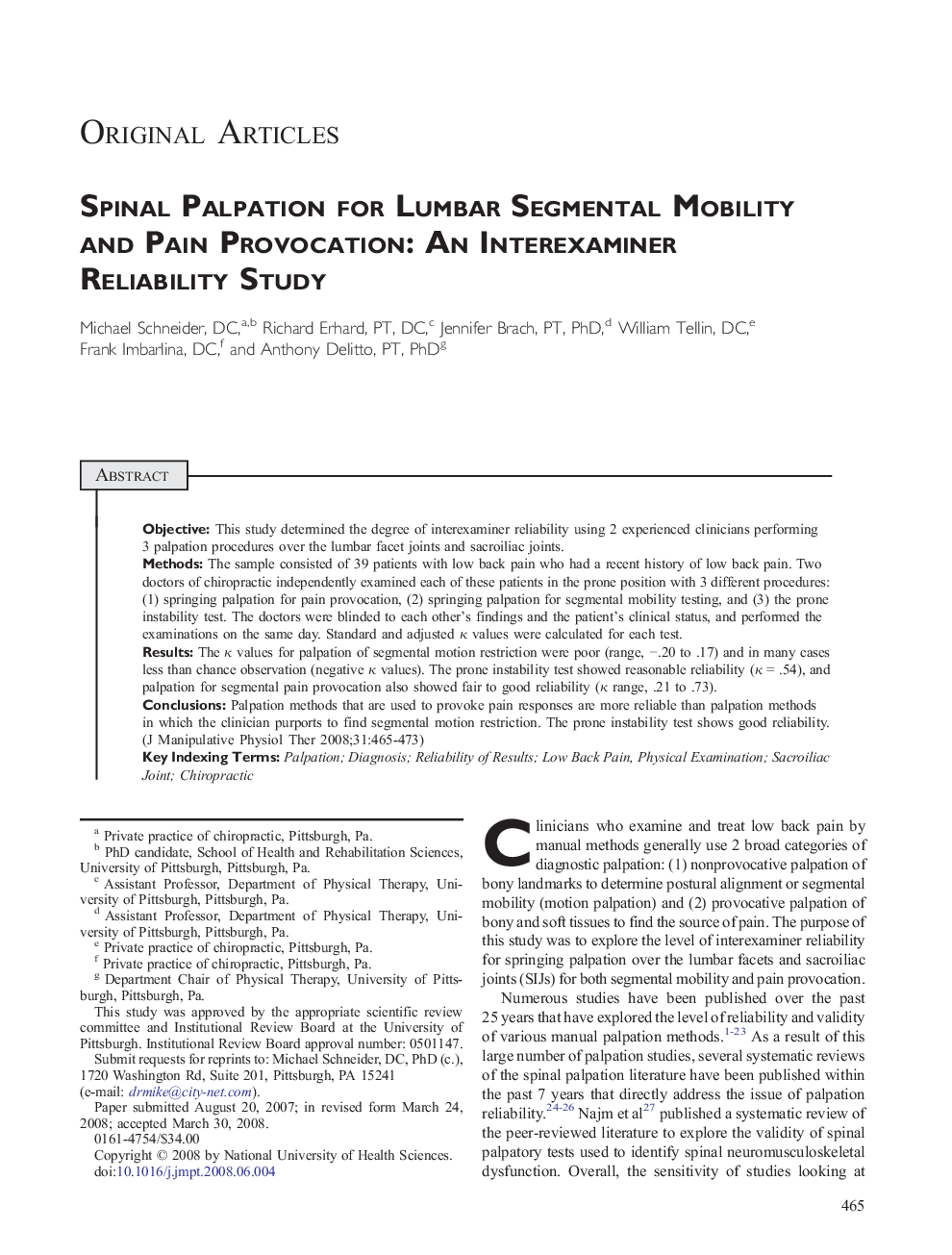| Article ID | Journal | Published Year | Pages | File Type |
|---|---|---|---|---|
| 2621056 | Journal of Manipulative and Physiological Therapeutics | 2008 | 9 Pages |
ObjectiveThis study determined the degree of interexaminer reliability using 2 experienced clinicians performing 3 palpation procedures over the lumbar facet joints and sacroiliac joints.MethodsThe sample consisted of 39 patients with low back pain who had a recent history of low back pain. Two doctors of chiropractic independently examined each of these patients in the prone position with 3 different procedures: (1) springing palpation for pain provocation, (2) springing palpation for segmental mobility testing, and (3) the prone instability test. The doctors were blinded to each other's findings and the patient's clinical status, and performed the examinations on the same day. Standard and adjusted κ values were calculated for each test.ResultsThe κ values for palpation of segmental motion restriction were poor (range, −.20 to .17) and in many cases less than chance observation (negative κ values). The prone instability test showed reasonable reliability (κ = .54), and palpation for segmental pain provocation also showed fair to good reliability (κ range, .21 to .73).ConclusionsPalpation methods that are used to provoke pain responses are more reliable than palpation methods in which the clinician purports to find segmental motion restriction. The prone instability test shows good reliability.
